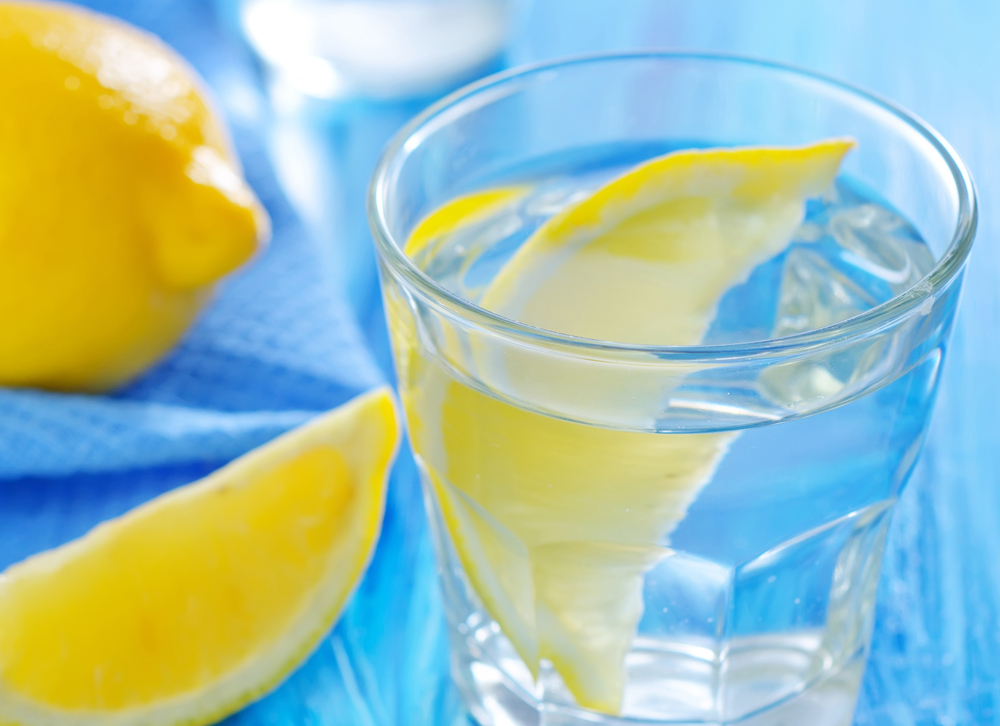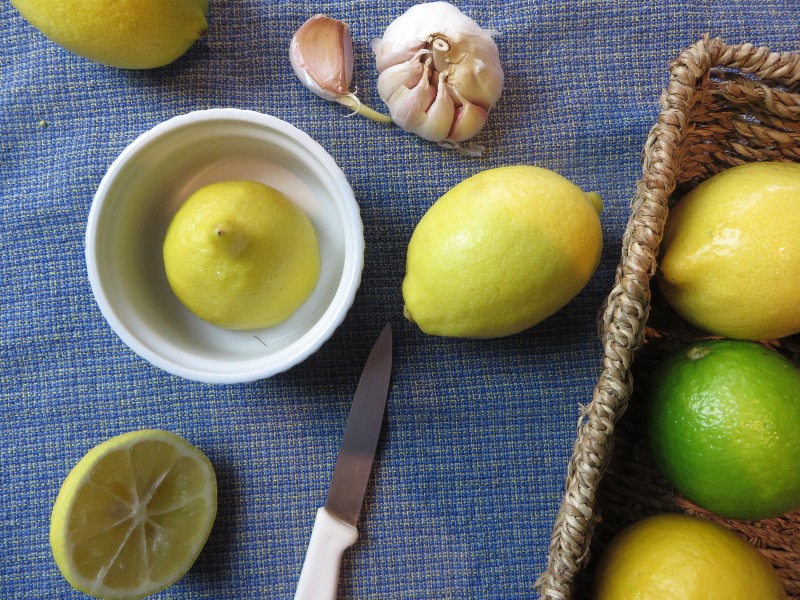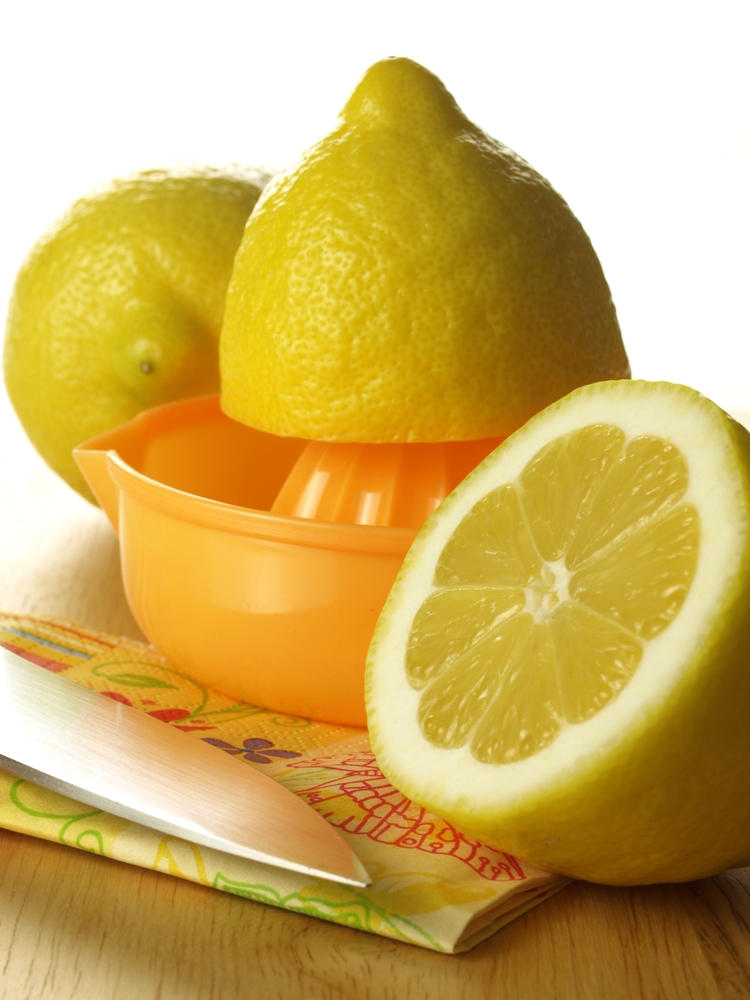- Home
- Blog
- Healthy Cooking
- 8 great reasons to love lemons
8 great reasons to love lemons
Written by Catherine Saxelby
on Friday, 05 June 2015.
Tagged: antioxidants, fresh food, health, healthy cooking, healthy lifestyle, juice, tips

I always have a couple of lemons in my kitchen and on every shopping list. Whether for juice, zest or slices, I love lemons and find them useful in so many ways. You can really taste how lemon juice lifts a vinaigrette dressing in a way that vinegar just can’t and how much better-tasting water is when you throw a slice of lemon into a jug of tap water. Then there’s that old-fashioned favourite of tea with lemon and honey, not forgetting the sharp hint from lemon zest in baking or the mellowness of slow-cooked Greek lamb with lemon.
What's so special about lemons?
Lemons are fresh, convenient and inexpensive – and can help you overcome the ‘sameness’ of processed foods. I make use of them daily! In addition to their taste appeal, I’ve discovered lemons have many nutrition benefits too and wanted to share these with you. Take a look!
1. Lemons help your weight loss efforts
For years, dieters have been told to start the day with a glass of water with the juice of half a freshly squeezed lemon to ‘cleanse’ the insides and quell early-morning hunger pangs. While there’s no real evidence to prove if this works or not, it’s easy to see why lemons feature in so many diet regimes.
Lemon juice has almost no protein or fat and barely a gram of carbohydrate (primarily sugar) in every 100mLs yet changes flavour so dramatically. This means that an average-sized lemon yields only around 80 kilojoules (20 Calories), which is hardly anything. It has so few kilojoules that you can use it freely if you’re on a diet – you don’t even need to bother counting it. Despite its acidic taste, it won't dissolve away fat or make you skinny. Ditto for grapefruit. Sorry.
2. Acidity and GI
 Research shows that the high acidity of lemons lowers the rate at which other carbohydrates or sugars are absorbed, so that your body digests them more slowly, which calls for less insulin which is good news for people with diabetes who do not make enough.
Research shows that the high acidity of lemons lowers the rate at which other carbohydrates or sugars are absorbed, so that your body digests them more slowly, which calls for less insulin which is good news for people with diabetes who do not make enough.
That lemon juice you squeeze into a salad dressing to drizzle over a rice salad, for example, will lower the overall Glycaemic Index (GI)of the rice in the salad, helping you feel fuller for longer. So it pays to be generous with that squeeze of lemon juice over your meal. It can effectively lower it’s GI to keep your blood glucose under control and your hunger pangs at bay.
Lemons have the highest content of citric acid of all fruits – almost 5 per cent. Citric acid is extracted and purified into crystalline form and is useful for adding flavour to other drinks. I would often buy a packet when I made my own home-made lemon cordial base.
3. Lemons score high for nutrition
Lemons, like all citrus, are packed with vitamin C or ascorbic acid, which is needed for strong gums, collagen (a cementing material in joints) and boosting your immune system. The juice of half a lemon (2-3 tablespoons or 40-60mL or 1-2 oz) boosts your vitamin C by 44 mg which is 100 per cent of your recommended day’s intake.
You also get a little of the B vitamins, folate and thiamin, plus good amounts of the mineral potassium, an essential mineral that counteracts the damage done by excess salt to the kidneys and heart. There’s not much else in terms of vitamins and minerals.
But wait there’s more! Lemons give you valuable flavonoids (antioxidants) such as hesperidin and limonene from the rind.
4. Lemons help you cut back on salt
Using lemon juice with its distinctive tart flavour helps you cut down on salt when you cook fish, prawns, lamb (think Greek slow-cooked lamb with garlic and lemon slices) and vegetable dishes like my Raw Zucchini salad with lemony dressing. Less salt means less fluid retention, another positive for your weight.
 5. Lemons boost the absorption of iron
5. Lemons boost the absorption of iron
The vitamin C in lemons boosts the absorption of iron from foods, particularly the non-haem iron found in vegetables and legumes such as peas and lentils. With a squeeze of lemon juice, it’s easy to add vitamin C to salads, over cooked spinach or silverbeet and with chick peas or borlotti beans.
6. Lemon rind adds something special too
Don’t overlook the rind of the lemon - both the rind and juice contain the flavonoid limonene. This is an antioxidant that’s showing promise as an anti-cancer agent but at this stage there’s still a way to go. There’s also US research showing that the rind has the potential to lower cholesterol – similar findings from grapefruit and orange have also been reported. Whether this ends up being proven or not, it’s another good reason to add grated lemon rind to muffins, grilled fish, steamed green beans and chicken dishes. (Make sure you just grate the coloured part of the rind, the zest, as the white part, the pith, can be very bitter.)
The rind is rich in aromatic oils which contains high levels of that natural limonene which is responsible for the rind’s lovely odour and is under study as a cancer-preventive agent in humans.
Warning: the peel can trigger contact dermatitis in some people.
7. Lemons have a multitude of uses at home
You all know that lemons are a versatile healthy ingredient and have heaps of uses in cooking from hot tea with lemon juice, salad dressings (use it in preference to vinegar for its vitamin C) and drinks of all kinds. Even home-made lemonade made from scratch with lemon juice and sugar is still streets ahead of the commercial stuff. I like to seek out lemon in desserts too from Lemon gelato (the water-based version) to Lemon soufflé (a treat, not so healthy).
But lemons do other great things including:
- They prevent cut fruit and veg from turning brown thanks to their ascorbic acid and citric acid. For example, a bowl of peeled apple slices will go brown in minutes unless you pop them in a bowl of water to which you’ve added the juice of half a lemon.
- They add acidity and pectin to jams and marmalades
- Not forgetting their ability to soften tough elbows and heels. Just sit with a used lemon half under each elbow or heel for 10 minutes and see what I mean.
- Maggie Beer gave me a handy tip once on Masterchef – she used a lemon as a quick stuffing for a roast chicken. Yes! It not only added its own flavour but provided structure for the cavity so your finished chook looked like a rounded tall beauty. See this YouTube video.
 8. Lemons keep well without refrigeration
8. Lemons keep well without refrigeration
How I wish I’d planted a lemon tree 10 years ago so I could harvest my lemons now when they ripen. If you have a sunny open spot, go plant one today. Commercial varieties are Eureka and Lisbon but there are other specialised varieties with their own unique flavour or advantages e.g. Meyer Lemon is less acidic and more sweet, Lemonade Lemon is designed to be eaten straight off the tree like you would an orange or mandarin and was developed in Australia.
Ways to use lemons
 Use lemon juice liberally wherever you can:
Use lemon juice liberally wherever you can:
- Squeeze it over fish, oysters, prawns, smoked salmon and any seafood (dill is a natural companion).
- Substitute it for vinegar for a tangy salad dressing that is rich in vitamin C .
- My recipe for a quick French dressing is: mix the juice of one lemon with 3-4 tablespoons of olive oil, ½ teaspoon Dijon mustard and a few grinds of black pepper. Combine in a small jar, shake well before using. Store in fridge and use within 3-4 days.
- Mix the juice of one lemon with a tablespoon of honey for a sore throat. Don’t add water. Just dissolve the honey and drink it neat.
- In contrast, a mug of lemon and honey in hot water can make a soothing and relaxing tea before bed.
- Use a whole lemon as a stuffing for roasted chicken – simply prick the skin and then insert a whole lemon along with a few springs of fresh rosemary or parsley to fill the cavity before roasting.
- Add slices to your pan when steaming vegetables to lift flavours
- Enjoy in tea instead of milk
- Add a slice of lemon to a jug of tap water for a subtle refreshing flavour (you'll drink more water too!)
A couple of tips
- To extract the most juice, have them at room temperature and roll them around on the bench first to break up their juicy membranes.
- If you have a bumper crop, squeeze and freeze for later. Pour the juice into an ice cube tray so you can later use a tablespoon as you need it. It retains most of its vitamin C but aim to use up within 6 months for the max flavour and vitamins.
Jemma O'Hanlon
The Good Stuff
The Boring Stuff
© 2025 Foodwatch Australia. All rights reserved
Website by Joomstore eCommerce





